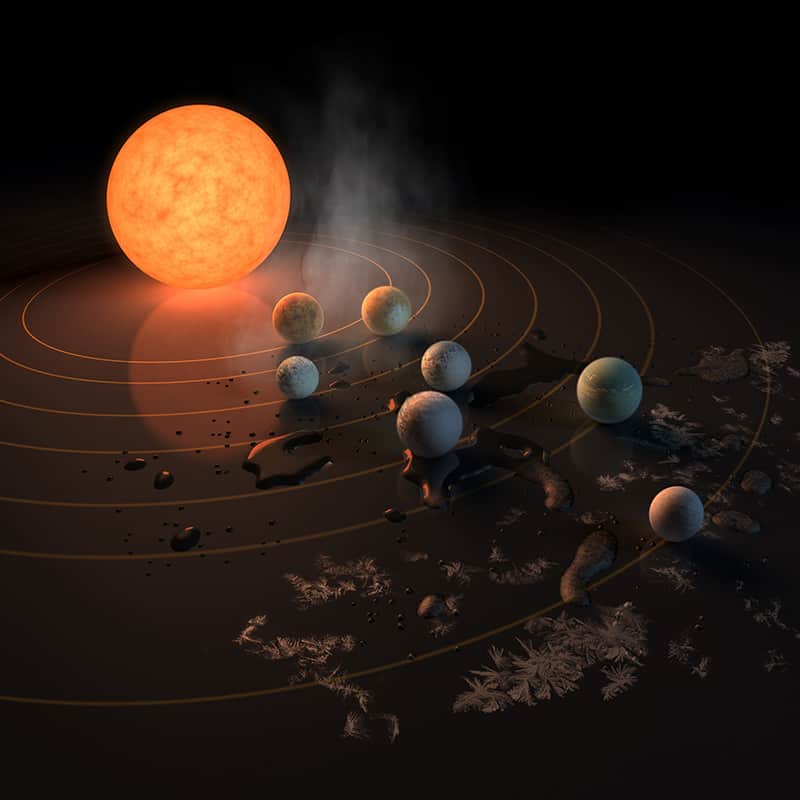
Exploring the worlds of TRAPPIST-1

Physics World Stories Podcast
Shownotes Transcript
Just 40 light-years from Earth, TRAPPIST-1 is relatively small compared with the size of our Sun, with a mass 80 times that of Jupiter. Researchers were able to spot periodic drops in intensity of light from the star, as observed by the TRAPPIST telescope in Chile. Using the “transit” method of exoplanet detection, the astrophysicists were able to infer the presence of seven planets sweeping across the face of the star. Remarkably, all seven objects appear to be similar in size to Earth, with radii ranging from 0.77–1.13 Earth radii. The team was able to determine the mass and density of six of the exoplanets, which suggests that they have rocky compositions.
In this podcast, Glester meets researchers involved in the discovery to find out what they know so far about the system. What would it be like to stand on the surface of a TRAPPIST-1 planet and stare out at the night sky? What is the geology of the planets? How can future space missions enable us to learn more about the system?
With his characteristic enthusiasm, Glester discovers that these planets could be even more intriguing than we first thought. You can also hear Glester’s extended conversation with lead researcher Michael Gillon on the Cosmic Shed podcast ).